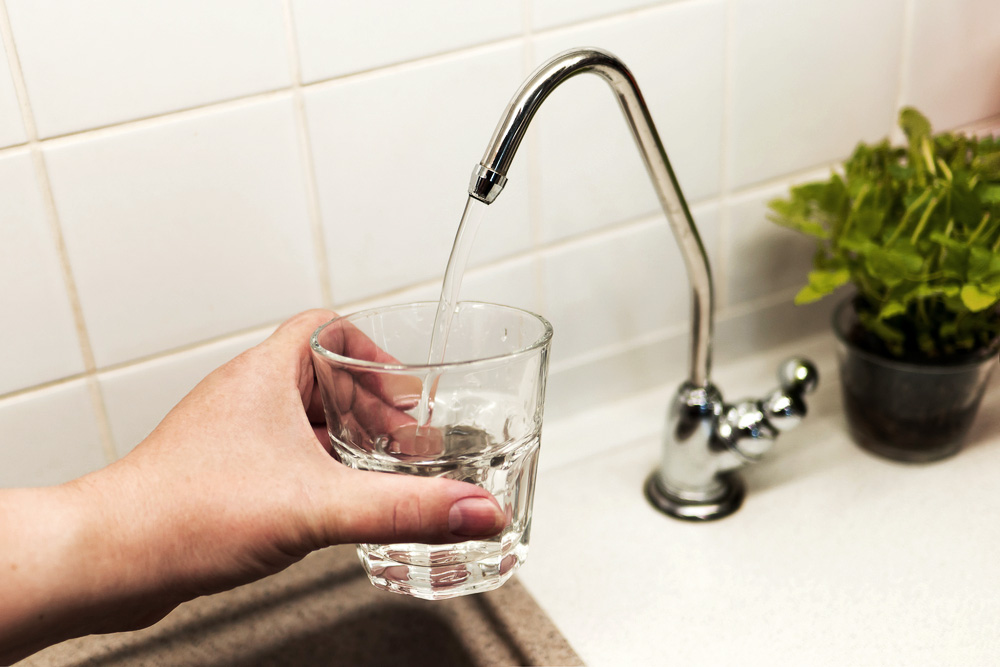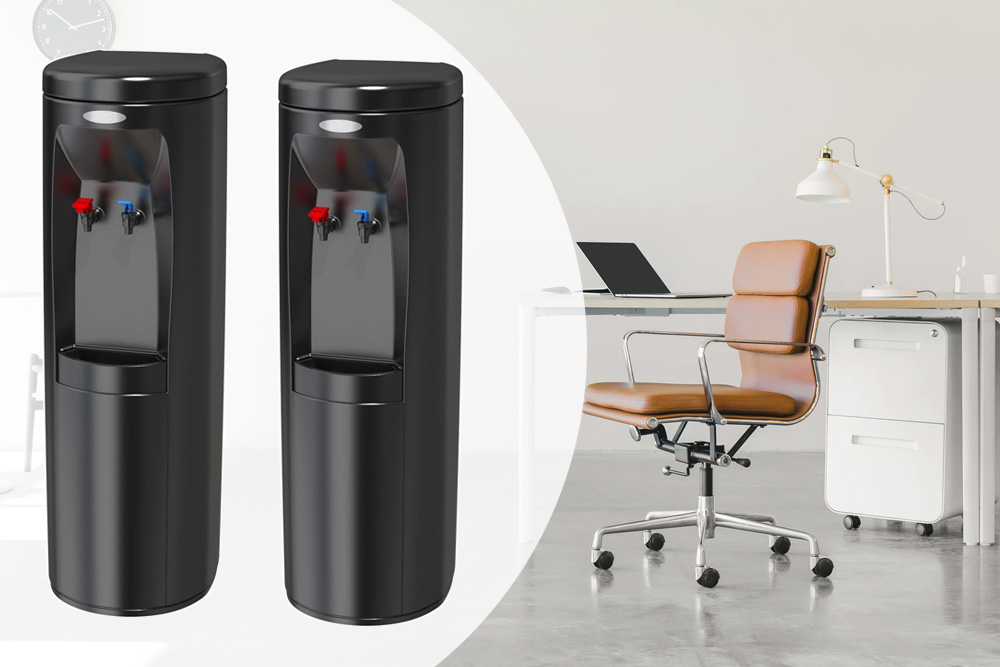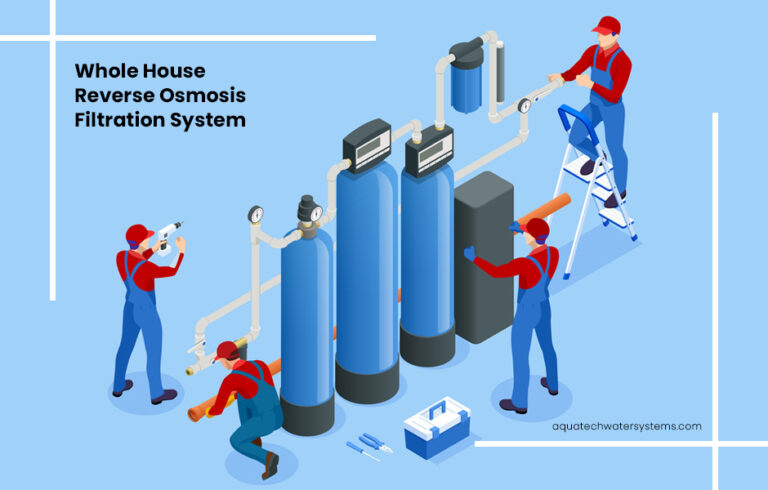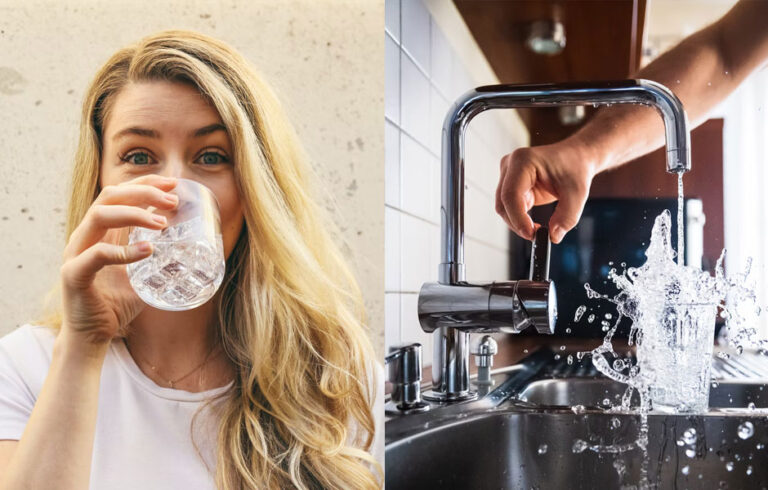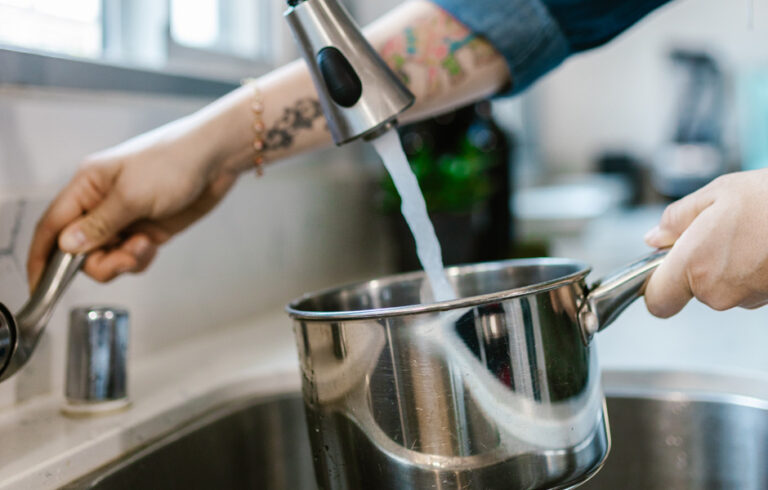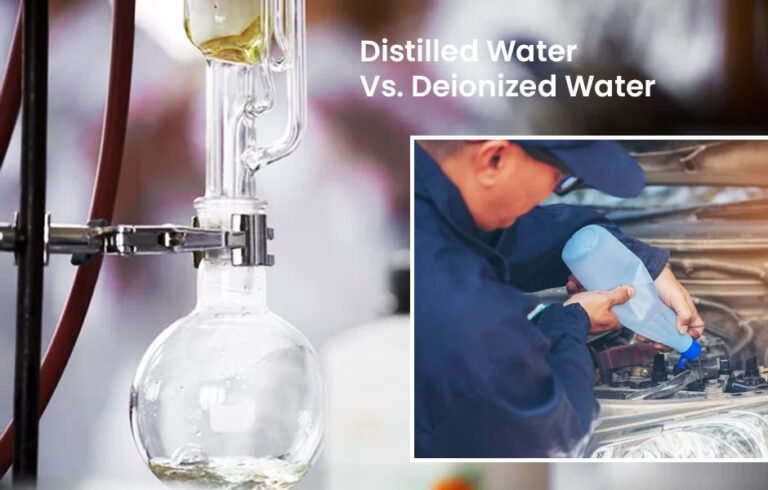Water filters are often used to filter out harmful contaminants such as chlorine and other chemicals. However, recent studies have found that RO water filters can also trap microplastics which otherwise can be ingested by humans by getting into our food systems.
This is an alarming issue because there are no regulations for how much of these particles can be present in bottled water or tap water before it is considered unsafe for human consumption. What should consumers do? Let’s find out!
Before we dive in, let us answer this question: Do reverse osmosis water filters remove micro-plastics?
Yes, most of the RO filtration systems can remove micro-plastics, but not all. The best filtration system for removing micro-plastics is the reverse osmosis filtration system with a carbon pre-filter. While the carbon pre-filters remove chlorine, sediment, rust, and other contaminants, the reverse osmosis membranes effectively eliminates micro-plastics with their tiny pores!
In this article, we will look at microplastics, where it is found, how reverse osmosis filters remove microplastics, the best reverse osmosis systems for removing microplastics, and what you can do to reduce your plastic footprint.
We will also look at microplastics found in bottled water and tap water, along with the potential health risks associated with microplastics.
What are microplastics?
Microplastics are microscopic plastic pieces that are either manufactured or created when larger pieces break down. Microplastics come in an array of different sizes. Still, most microplastics found in drinking water sources are less than 5 millimeters in size. That is, smaller than the width of a human hair.
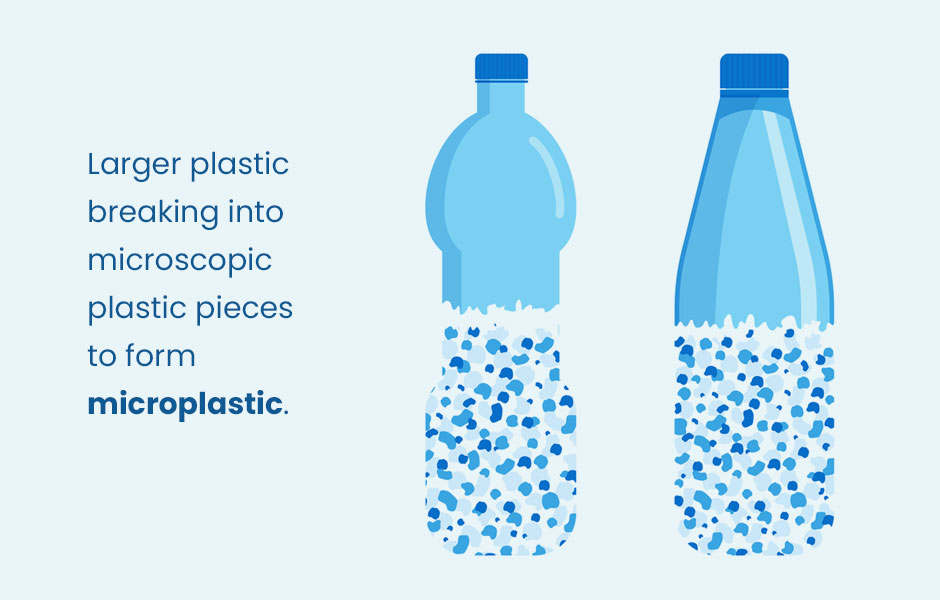
It is estimated that there are over 8 trillion micro-plastic particles in the world’s oceans. Most of our water intake comes from these contaminated waters, so it is vital to know how reverse osmosis systems remove micro-plastics.
How do microplastics originate?
Microplastics are formed from a variety of different sources, but it is most prevalent in the ocean. Plastic particles can clog up our waterways and oceans, as well as the animals that live there.
Microplastics are also derived from the breakdown of more oversized plastic items. For example, when a water bottle or other disposable plastics breaks down into smaller pieces in landfills and oceans through exposure to wind, rainwater, sunlight, etc. These tiny particles eventually break down into microplastics that can contaminate our drinking water sources.
The natural breakdown of plastic in the environment also produces microplastics. For example, when marine animals consume large amounts of plastics broken down into smaller pieces or shredded fishing nets, they become entangled and die from being strangled by these synthetic materials.
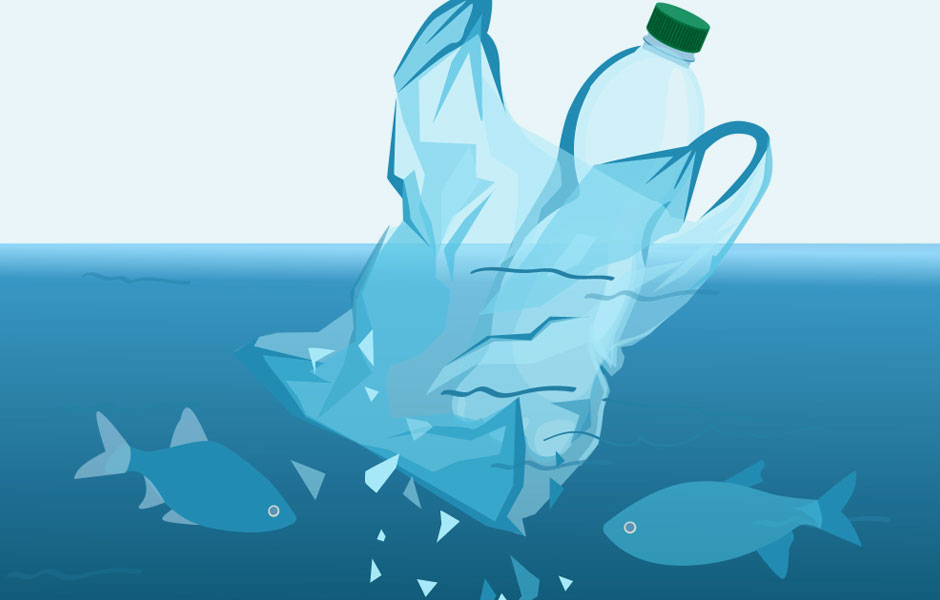
One study found that 90% of fish in the Mediterranean Sea had plastic particles in their guts because plastics entered the food chain.
How do micro-plastics enter our water system?
Micro-plastics can enter our water system in many different ways, including:
- Disposable plastics such as water bottles, cups, and utensils pollute oceans and beaches. Smaller plastic items that end up in waterways or oceans can break down into micro-plastics through exposure to ultraviolet light and/or physical abrasion. These plastics then contaminate our drinking water sources by entering our food chain.
- Micro-plastic particles enter groundwater sources by being blown in the air, washed off soil surfaces, or carried through creeks and rivers.
- Contaminated water can also enter our waterways from combined sewer overflows (CSOs). During heavy rain events when sewers cannot handle the excess water that enters them. During these periods of intense rainfall, micro-plastics will be flushed into the waterways.
- Synthetic clothing fibers from washing synthetic clothes in the laundry. These microfibers are washed down our drains into rivers, lakes, and eventually drinking water sources or remain trapped by wastewater treatment filters. This is a big issue because these microfibers can absorb dangerous chemicals and pass them to human consumers.
- Micro-beads are another source of microplastics that enter our water sources through wastewater treatment filters or directly from facewash, body wash & toothpaste products. The problem with these micro-beads is that they do not biodegrade like other plastic items. They remain in the environment indefinitely. These micro-beads act like magnets for chemicals and toxins consumed by marine life when it eats plankton & fish contaminated with these plastics.
- Micro-plastics are also often found in household products such as cleaning agents, shampoos, face scrubs, body washes, and other personal care products.
The improper management of non-biodegradable plastic objects is mainly responsible for micro-plastic pollution. Due to their synthetic composition, they enter the environment. They do not break down easily in landfills or wastewater treatment facilities.
As humans, it is our responsibility to protect our water sources and reduce the amount of micro-plastics that enter them. We can all do this by reducing our personal plastic use, recycling what we can but most importantly, refusing single-use disposable plastics such as straws, coffee cups, etc.
What are the potential health risks of consuming micro-plastics?
Plastic particles contain numerous chemicals that are harmful to human health. As such, there are many potential health risks that micro-plastics can pose to human consumers.
When humans consume seafood (such as fish), their bodies can absorb microplastics and the toxins they contain bio-accumulated throughout the marine food web. These micro-plastics and chemicals can enter human fat cells, tissues & organs, where they will accumulate over time.
When microplastics are ingested through your drinking water system, they can pass along toxic chemicals, leading to inflammation of the stomach lining and affecting hormone levels.
Microplastics can also act as carriers for disease-causing pathogens such as bacteria, viruses, and parasites often found in oceanic ecosystems. These microplastics can cause food poisoning symptoms when ingested by humans through seafood or drinking water sources.
There is currently no evidence that humans are absorbing plastic particles from drinking water. Still, studies have shown “significant amounts of microplastic contamination in bottled water,” so it would be prudent for consumers to avoid buying these types of bottled water.
How to remove microplastics from drinking water?
There are several ways in which microplastic filtration can be achieved for your drinking water. These include reverse osmosis filtration systems, activated carbon filters & sediment filter cartridges. However, the reverse osmosis filtration system is the best option because it uses a membrane to separate the micro-plastic particles from drinking water after being filtered by carbon, UV, and other purification processes.
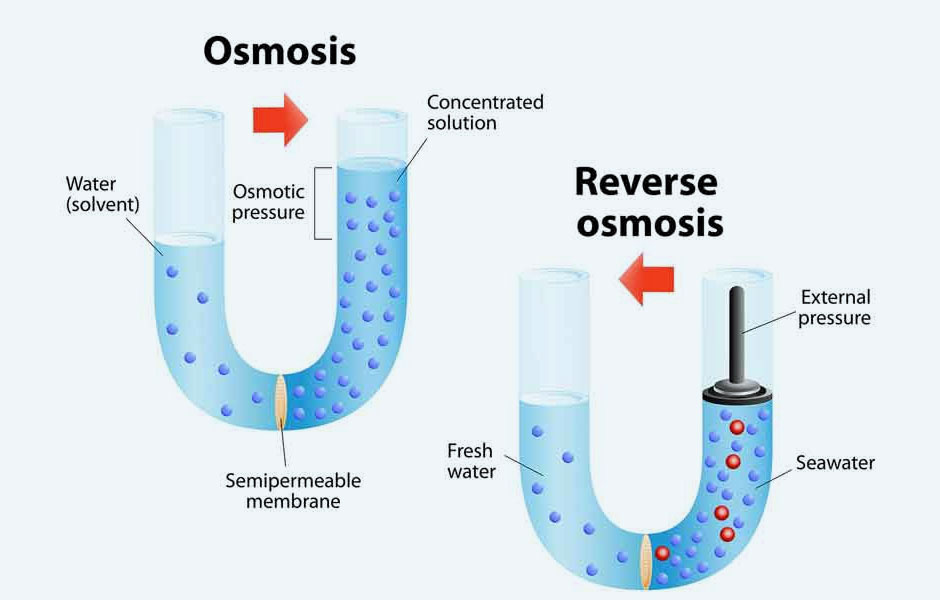
Reverse osmosis achieves the best results because it has a smaller pore size than activated carbon filters which means reverse osmosis can catch finer plastic particles, resulting in cleaner drinking water.
Microplastics in tap water and how to remove it
Microplastics in tap water are a growing concern. A study by Orb Media discovered that 83% of tap water samples from over a dozen countries worldwide were contaminated with micro-plastics.
The United States had an average of 325 plastic pieces per liter, Canada 259, Lebanon 51, and India just one piece of micro-plastic in every four liters sampled! The study also found that in the United Kingdom, which has some of the highest tap water standards in Europe, 94% of samples were contaminated with micro-plastic.
In the US, most tap water is derived from groundwater sources, likely to contain microplastics. The municipal filtration process does not use a reverse osmosis filtration system. Instead, most of them use chlorination which can only kill off any harmful bacteria.
Hence, installing a reverse osmosis filtration system is the most effective way to remove microplastics from your tap water.
Microplastics in bottled water and how to get rid of it
Bottled waters are not regulated in micro-plastic contamination, and there is no way to determine whether a particular bottled water brand is contaminated with micro-plastics.
Orb Media also found that all of the 11 brands of bottled water they tested contained micro-plastics. Orb Media discovered that a single liter of bottled water could hold up to ten thousand micro-plastic particles.
Several other studies conducted on 250 bottles in 9 countries showed that microplastics are present in most of bottled water. The study concluded that there were as many as 10 plastic particles per liter of bottled water. Even those that claim to be “pure” or filtered contain micro-plastic particles resulting from the filtration process.
As a result, it is better to avoid buying plastic bottles of water if possible because they not only contain microplastics but also contain chemicals such as bisphenol A (BPA) and phthalates which can leach into your drinking water.
It might be challenging to get rid of micro-plastics from your bottled drinking water. If you want to drink water free of micro-plastics, we recommend that you install an RO water system in your house or business. This will ensure that you have clean and healthy drinking water due to the removal of micro-plastics.
Best water filters for microplastics
Some of the best water filters for microplastics include reverse osmosis systems, activated carbon filters, and sediment filter cartridges. However, reverse osmosis systems are the best option because they have a smaller pore size than activated carbon filters which means they can catch finer particles of plastic, resulting in cleaner drinking water.
Some of the top RO water filters that can remove microplastics are:
How does reverse osmosis filters remove micro-plastics?
Other filtration systems such as microfiltration and nanofiltration are effective at trapping larger than 0.05 microns contaminants. However, reverse osmosis membranes can filter out particles down to the 0.0001-micron level.
Reverse Osmosis (RO) is a process in which pressure is applied to the surface of raw water containing suspended particles. This process causes these particles to pass through pores or semi-permeable membranes, leaving behind cleaner, purified drinking water ready for human consumption. This is why reverse osmosis systems are also sometimes called “pressure-driven membrane systems.”
Aquatech offers RO drinking water services for one low, all-inclusive monthly subscription cost. Check out the prices and offers!
The process of reverse osmosis water filtration is as follows:
First, the raw source water is pumped directly from a tank outside the faucet to the reverse osmosis filter housing unit by either electricity or manual pumping action.
After passing through the sedimentary, carbon, and UV filters, this water is passed through a reverse osmosis membrane made from thin sheets of polyamide materials. It has a semi-permeable barrier that separates clean drinking water from the rest of the source water by using pressure and gravity, forcing it through very fine pores in its thin film.
This process leaves behind contaminants such as salts, heavy metals, minerals & micro-plastics that are too large to pass through this membrane, thus giving clean and great-tasting RO drinking water.
Reverse osmosis filtration removes micro-plastics and improves the overall taste and purity of your drinking water, and removes heavy metals such as lead and arsenic, VOCs, radioactive particles, chlorine, and fluoride.
Other ways to reduce your exposure to plastic pollution in our environment
Although reverse osmosis systems are the most effective way to remove microplastics from your drinking water, there are some other ways in which you can reduce your exposure to plastics.
These include: buying a reusable water bottle made of glass or stainless steel instead of plastic bottles; using paper towels instead of dryer sheets that contain plastics; carrying a refillable metal or glass water bottle instead of buying plastic-bottle drinks when you are on the go.
Limit the use of single-use plastics such as disposable cutlery, packaging, and water bottles. Create awareness about plastic pollution and its harmful effects within your community.
If you want to conserve the environment and your health, we all must change our lifestyles by limiting how much plastic we use each day.
FAQs
How to remove microplastics from water?
The best way to remove microplastics from your water is by using a reverse osmosis filtration system. RO systems remove micro-plastics and improve the overall taste and purity of your drinking water. It also removes heavy metals such as lead and arsenic, VOCs, radioactive particles, chlorine, and fluoride.
How to detect microplastics in drinking water?
There are a few ways to detect microplastics in your drinking water. One way is to use micro-Raman spectroscopy, a form of laser light scattering. This method can identify micro-plastics down to 0.001 microns in size. Another way is to use high-performance liquid chromatography (HPLC) to identify micro-plastics that are larger than 0.05 microns.
Conclusion
Micro-plastic pollution is a growing global environmental concern. Many health organizations, such as the World Health Organization (WHO), are calling for more significant action to reduce microplastics in our waterways, protecting human consumers from potentially harmful effects associated with plastic consumption.
Humans can ingest these microplastics through contaminated water or seafood.
Reverse osmosis filtration systems remove contaminants from your drinking water, including micro-plastics down to 0.0001 microns in size. So reverse osmosis is an excellent way to get rid of these pollutants and improve the quality of your drinking water in general.
This article was originally published in Oct-2021 and was last updated in Nov-2022
Author: Donna J H
Category: Drinking Water

